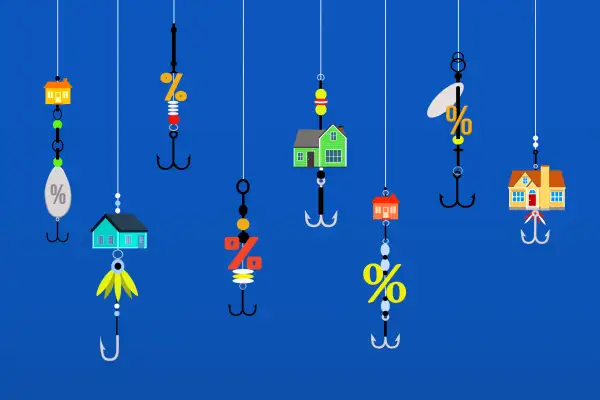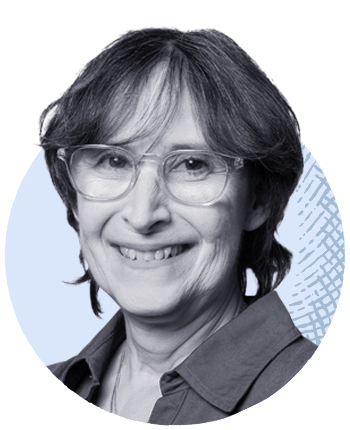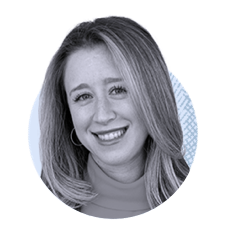Specialty Mortgage Products Promise Lower Rates and Fees — but Are They Safe?

Rapidly rising mortgage rates are changing how both buyers and lenders are approaching home loans.
Mortgage rates have nearly doubled since the first week of January, to today’s current average of 6.31%. Higher rates mean higher mortgage payments and fewer people who can afford to buy. As a result, lenders have seen a big drop in business. The number of new mortgage applications is hovering at the lowest level since 2000, according to the Mortgage Bankers Association.
“Business is down significantly for most lenders and buyers are feeling the pain of higher rates,” says Craig Garcia, president of Capital Partners Mortgage Services in Florida. “If you can help customers with that challenge, maybe you have the opportunity to do some business.”
Lenders are bringing back specialty loan products — such as interest only loans and no closing cost loans — to address the challenges posed by higher rates. Many of these products have not been popular (or in some cases even available) since the housing market crash of 2008, which can bring up unpleasant memories of housing bubbles and market crashes..
These new lender options aren’t the same as they were — you’ll find more stringent qualification requirements and safeguards that can keep borrowers from getting in over their heads.
However, these loans come with risks. It’s important to understand the pros and cons associated with each loan type and to work with a lender that can assess your particular situation and recommend the right product for you. (For other creative ways to reduce your mortgage rate or monthly payments, read our story on mortgage rates hacks.)
Here are some of the lender programs you might come across.
Lender-funded rate buydowns
A mortgage rate buydown is when a third party, such as a seller, builder or real estate agent, pays to reduce the interest rate on a buyer’s mortgage. Mortgage lenders, such as Rocket Mortgage and New American Funding, are now offering to pay for buydowns, as well.
Most buydowns are temporary. The most common set up is known as a 2-1 buydown, where the interest rate is reduced by 2% the first year and 1% the second year. Some lenders will offer multiple buydown options, including a 1-1, a 3-2-1 and a 1-1-1-1.
The money is put into a lender funded account and used to cover the gap between what the borrower pays and the full monthly payment. Paying less for the first few years can help offset the costs of a new home.
“You might make improvements, you might buy furniture, so anything that can reduce the monthly payment on the front end is a benefit,” says Peter Idziak, senior associate attorney for Polunsky, Beitel and Green, a law firm specializing in mortgages.
You’ll need to qualify for the loan at the full rate, and once the buydown period is over your monthly payments will increase.
Interest-only loans
With an interest only loan, you postpone payment on your loan principal and only pay the lender’s interest fee typically for five or ten years. This will reduce your initial monthly payment, but is risky and only makes sense in certain circumstances.
Keep in mind that interest-only borrowers are still on the hook for the full amount. “The obligation doesn’t go away, you’re just kicking the can down the curb,” says Melissa Cohn, regional vice president of William Raveis Mortgage in New York.
Here’s how it works: Say you’ll get approved for a $300,000 loan at a 6% interest rate and a 10-year interest only period. Your monthly payment would be $1,500 for the first 10 years, the amount of interest you would owe on the loan. Once the interest-only period ended, your monthly payment would jump up to $2,149 and would cover both principal and interest for the remainder of the loan term.
By comparison, your monthly payment would be $1,799 if you obtained a conventional 30-year fixed-rate loan.
You can find fixed-rate interest-only loans, as in the example above, but most will be offered as adjustable rate mortgages. With an interest only ARM, you pay only interest — no principal — during the fixed-rate term of the loan.
So, a big jolt will come when the interest-only, fixed-rate period ends. At that point, you not only start paying principal but your interest rate begins to adjust every six to 12 months, depending on the loan’s adjustment period. Your rate could jump significantly depending on market trends
Another big drawback is that you won’t start gaining equity in the home until you start paying down the principal — the only equity you’ll have is the amount paid as down payment.
This type of loan is best for borrowers who can afford the full payments but want to put that money to work in other ways. “They want to take that money and maybe divert it into investments,” says Garcia. “They’re financially going to do something better with the money.”
Online banks like Axos and large retail banks like Chase, offer interest-only loans, but the product is not that common. Most if not all interest only loans will be geared toward jumbo mortgages or borrowers with high credit scores, large cash reserves and high incomes. However, there aren’t standardized qualification requirements for interest-only loans.
40-year fixed-rate mortgages
A 40-year mortgage is exactly what it sounds like: a home loan structured to be paid back over four decades, instead of the more common 30-year or 15-year terms. All else equal, the monthly payments on a 40-year loan will be lower since you are dividing the principal over a longer period.
However, 40-year loans are rare and tend to come with high interest rates, making it a costly option in the long run. That’s why this type of loan is typically only offered as a loan modification for borrowers at risk of default.
There are several different types of 40-year loans, including fixed and adjustable-rate loans, interest only loans and loans that require a balloon payment when the mortgage term ends.
However, the Consumer Financial Protection Bureau considers all of these variations to be risky. If you are looking for lower monthly payments or interest rates, there are better alternatives, like rate buydowns, out there.
Zero closing cost loans
Closing costs typically run between 2% and 6% of a home’s purchase price and tend to be paid upfront in addition to a down payment.
However, many lenders offer the option of a no or zero closing cost mortgage, where the lender will cover the costs. The draw here is that the borrower doesn’t need to bring as much cash to the table and it could make a home purchase more affordable. A truly zero-closing cost loan means the borrower won’t have to pay these costs, ever.
Most loans billed as zero-closing cost actually do charge the fees one way or another. These costs are typically rolled into the mortgage and will increase your loan amount. Or, the lender may charge a higher interest rate to cover the closing costs. Either way, your monthly payments will be higher than if you had paid the closing costs upfront.
Lenders are also attracting borrowers who purchase a home at a higher mortgage rate by offering zero-closing cost alternatives for a future refinance — usually by offering lender credits to cover all or part of these costs if the borrower refinances their loan with the same lender within the first one to three years of obtaining a mortgage. Better, for example, will pay up to $3,500 in lender credits towards refi closing costs of a future refinance if interest rates decrease within three years of closing.
More from Money:
6 Hacks to Get Around Sky-High Mortgage Rates
Homebuyers and Sellers Alike Are Loving This Popular Trick to Lower Mortgage Rates

